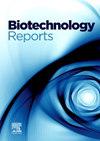基于噬菌体的生物传感器技术:材料、制造、效率和缺陷。
Q1 Immunology and Microbiology
引用次数: 0
摘要
生物传感器技术的持续研究已经为医疗保健诊断和噬菌体(噬菌体)带来了先进的功能材料,由于其高特异性、准确性、快速、无标签和无线检测能力,以最小的假阳性结果展示了卓越的实用性。基于噬菌体的病原体检测生物传感器(PBPDBs)包括表面等离子体共振(SPR)生物传感器、磁弹性(ME)生物传感器、电化学生物传感器和石英晶体微平衡(QCM)生物传感器。pbpdb常用的衬底有金、硅、玻璃、碳基材料、磁性颗粒和量子点。这些底物经过化学和物理修饰,以优化噬菌体在传感器表面的定向,增强细菌捕获。为了解决传统生物传感器应用中遇到的典型稳定性和问题,利用噬菌体颗粒和转基因噬菌体来提高生物传感器的稳定性和提高检测效率,同时减少检测时间。CRISPR/Cas9促进了噬菌体的遗传修饰,使噬菌体能够针对特定的细菌菌株进行剪裁。这种方法有助于克服噬菌体的固有特异性,并能够在一次检测中检测多种病原体。通过一种基于噬菌体的检测方法可以检测多种病原体。本文阐述了PBPDBs的制备方法和检测效率,为开发实用、精确、高效的病原体检测生物传感器提供了宝贵的见解。摘要:PBPDBs是检测细菌性病原体的新兴诊断工具。本文章由计算机程序翻译,如有差异,请以英文原文为准。

Bacteriophage-based biosensors technology: Materials, fabrications, efficiencies and shortcomings
Ongoing research in biosensor technologies has led to advanced functional materials for healthcare diagnostics, and bacteriophages (phages), demonstrating exceptional utility due to their high specificity, accuracy, rapid, label-free, and wireless detection capabilities with minimal false-positive results. Phage-based-pathogen-detecting biosensors (PBPDBs) include surface plasmon resonance (SPR) biosensors, magnetoelastic (ME), electrochemical, and quartz crystal microbalance (QCM) biosensors. Commonly used substrates for PBPDBs are gold, silicon, glass, carbon-based materials, magnetic particles, and quantum dots. These substrates are chemically and physically modified to optimize phage orientation on sensor surfaces, enhancing bacterial capture. To address typical stability and issues encountered in traditional biosensor applications, phage particles and genetically modified phages are utilized to improve biosensor stability and increase detection efficacy while reducing assay time. Genetic modification in phages facilitated by CRISPR/Cas9 enables the tailoring of phages to target specific bacterial strains. This approach helps overcome the inherent specificity of phages and enables the detection of multiple pathogens in a single assay. Multiple pathogens can be detected through a single phage-based assay. This manuscript elucidates the fabrication methodologies and detection efficiencies of PBPDBs providing valuable insights into the development of practical, precise, and efficient biosensors for pathogen detection.
Summary
PBPDBs are emerging diagnostic tools for the detection of bacterial pathogens.
求助全文
通过发布文献求助,成功后即可免费获取论文全文。
去求助
来源期刊

Biotechnology Reports
Immunology and Microbiology-Applied Microbiology and Biotechnology
CiteScore
15.80
自引率
0.00%
发文量
79
审稿时长
55 days
期刊介绍:
Biotechnology Reports covers all aspects of Biotechnology particularly those reports that are useful and informative and that will be of value to other researchers in related fields. Biotechnology Reports loves ground breaking science, but will also accept good science that can be of use to the biotechnology community. The journal maintains a high quality peer review where submissions are considered on the basis of scientific validity and technical quality. Acceptable paper types are research articles (short or full communications), methods, mini-reviews, and commentaries in the following areas: Healthcare and pharmaceutical biotechnology Agricultural and food biotechnology Environmental biotechnology Molecular biology, cell and tissue engineering and synthetic biology Industrial biotechnology, biofuels and bioenergy Nanobiotechnology Bioinformatics & systems biology New processes and products in biotechnology, bioprocess engineering.
 求助内容:
求助内容: 应助结果提醒方式:
应助结果提醒方式:


